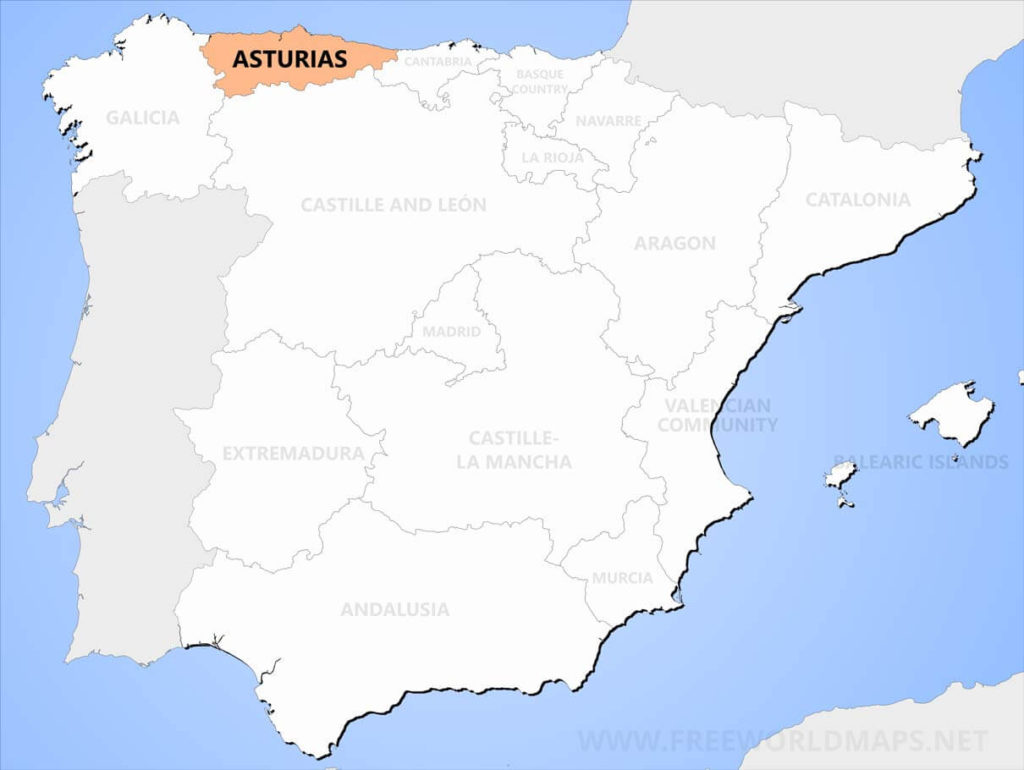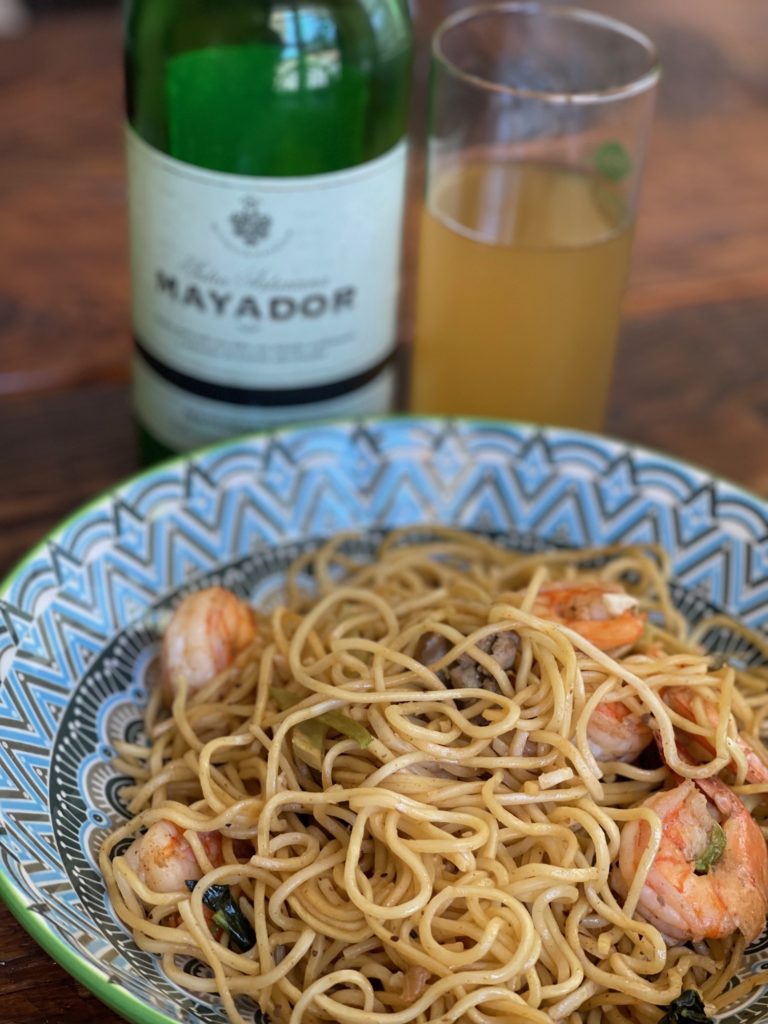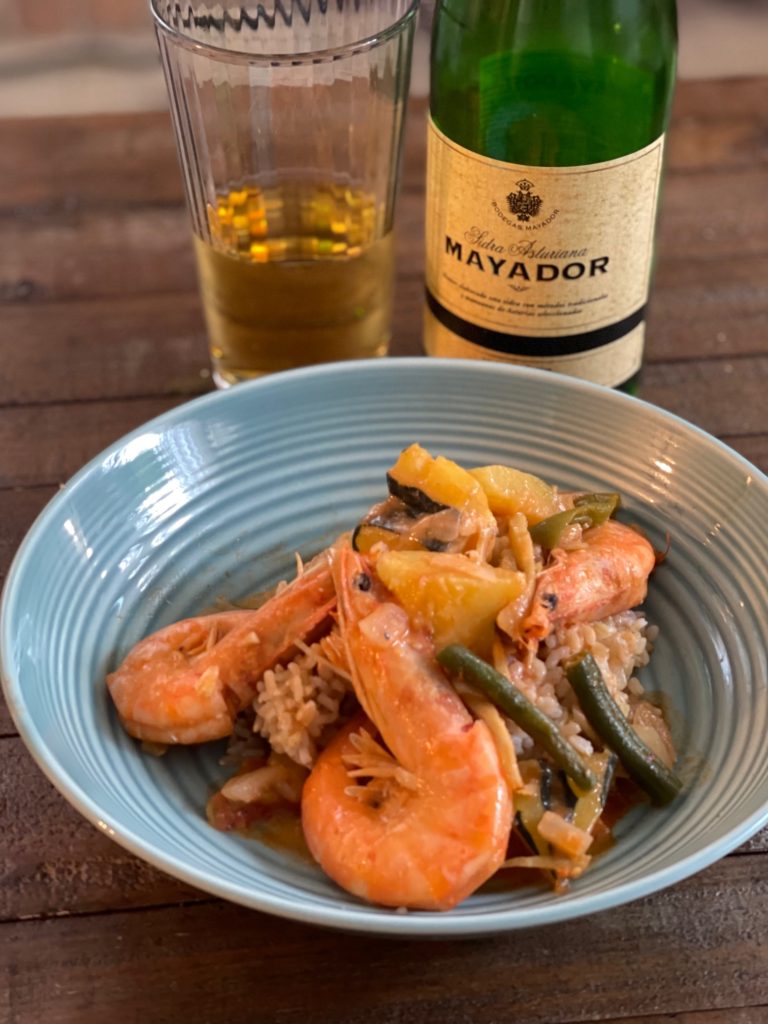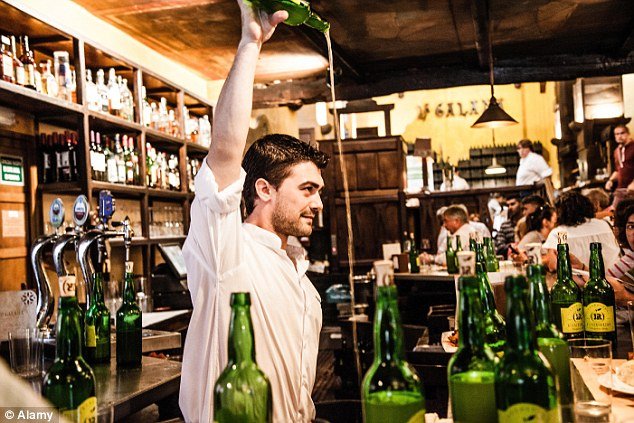This month the #WorldWineTravel group of writers is doing a bit of pivot and we’re diving into Spanish Cider (“Sidra”) as well as, potentially, ciders from the UK and France.
I’m writing about the Asturias Cider (Sidra Asturiana) of Spain here, but I’m looking forward to covering cider from France and the UK in another piece.
About Asturias Sidra (Cider)
Asturias is located in what is known as “Green Spain“, which is composed of four autonomous communities (Galicia, Asturias, Cantabria and the Basque Country) in the far north of Spain. It is a mountainous region with vast swaths of lush green vegetation. The combination of its proximity to the ocean, mountains, and its mild maritime climate provide ideal conditions for growing apples. And when you have as many apples as Asturias, you make cider. And Asturians have been making cider since the Middle ages.

When you’ve been making cider that long, it’s part of your culture.
There are essentially three types of cider produced in Asturias. 1) the traditional cider, which is still and unfiltered. It is served by pouring the cider from overhead into a glass held at waist level (see below) to aerate the cider and creates some bubbles. It’s a dry, tart (some would say funky) express of cider 2). A newer (filtered) expression natural cider, which is not poured; It’s fruitier and more “international” expression of cider, and 3. Sparkling natural cider, which should to be served in a flute glass ala sparkling wine.
Asturias cider is protected by a Denomination of Origin status, the European Union system of guidelines that lays out laws for the making of regional products like cheese, wine, beer and breads. For cider to wear the proud name of Asturias on its bottle, it can be made using only 22 specified varieties of apples (though more than 250 varieties of apples are grow in the region). Most producers use an unspecified mélange of apples, generally five or six varieties, and the wide range of possibilities allows for a great diversity in Asturian cider.
Check out the José Andrés Guide To Drinking Cider for pro tips about drinking cider and its traditions.
Disclosure: I received these ciders as a media samples. I received no compensation for this post, and all opinions presented are my own.
In My Glass And On My Plate
Mayador Sidra Natural 2018 is traditional still cider that was elaborated from Asturian apples in the traditional “en rama” style (“en rama” roughly translates to “raw”). It was fermented on native yeast present on the apples raised in chestnut barrels and is unfiltered.

Tasting note: It’s a cloudy pale golden-yellow color. Initially I picked up apple cider vinegar aromas, but that disappeared with some time in the glass (I wonder if the traditional “Spanish pour” from a height, to aerate the cider would have helped), and gave way to low key green and yellow apple, mixed citrus zest aromas with some musky notes. On the palate, it’s light-bodied, and very dry with medium-acidity. It shows tart apple, citrus, and spice flavors with a strong savory character. As I drank it, I was thinking “It needs food”. ABV – 6%|SRP – $7|750ml
We paired this with homemade Pancit Canton, a traditional Filipino noodle dish. My wife’s version included shrimp, a variety of veggies and chicken liver. I was right about the cider needing food. It paired very well with the Pancit, especially with the chicken liver.
Mayador Sidra Espumante 2018

Tasting Note: It’s a brilliant golden yellow color with tart fresh apple, apple skin, mixed citrus and spice aromas. On the palate, it’s medium-bodied, and dry on the front palate, but approaching off-dry on the back palate. It’s fizzy with medium acidity and tart fresh apple flavors, a hint of lemonade, and nicely accented with spice flavors, and a refreshing, fairly clean finish. ABV- 5%|SRP – $8|750ml
We paired this with another Filipino dish – Ginataan Hipon, Sitaw, at Kalabasa It’s a delicious shrimp and vegetable dish (in this case including acorn squash and jalapeno peppers from our garden) cooked in coconut milk. It also was fantastic pairing. The dish a bit sweet and lightly spicy and the lightly sweet character of the cider was a perfect complement for the dish.
About Bodegas Mayador
Founded in 1939 by Manuel Busto Amandi, Bodegas Mayador is one of the oldest producers in the Asturian region. It initially sold its products under the M. Busto brand, then later trademarked “Mayador”. The Mayador name originates from a Spanish term “Mayo” a person who smashes & crushes the apples with a wooden paddle before the juice is then fermented into sidres (ciders)
The founder always envisioned his company would be run business. His youngest daughter Consuelo joined the business 10 years before Manuel passed. One of the few women in the male dominated cider industry she has moved the forward my investing in new production facilities and expanding its product line such that it appeals to an international audience. Some members of the third generation of the Busto Alonso family have joined the company to continue the work of its founders.
This was a fun exploration of a new-to-me craft beverage from Spain. The $64k question – would you drink it again? For me, the answer is a hearty “Sí “. The Natural Sidra needs food, but I enjoyed its savory, funky character, which admittedly is likely an acquired taste for most, appealing. On the other hand the Sparkling Cider was easy to like, but more one-dimensional for me.
If you are reading this early enough, feel free to jump in on our live chat. We meet on Twitter on Saturday, July 24th at 8am Pacific time. Follow hashtag #WorldWineTravel and be sure to add it to anything you tweet so we can see it. Here are the articles the writers are sharing about Spanish hard ciders or ciders from around the world…
- A BBQ Party Featuring Spanish and French Ciders by Chinese Food & Wine Pairings
- A Crash Course in Hard Ciders by Somm’s Table
- Anna’s Ciders and Pier City Ciders by Wine Predator … Gwendolyn Alley
- Bodegas Mayador – A Taste of Asturias Cider by ENOFYLZ Wine Blog
- Cider Glazed Rotisserie Chicken and a Sampling of Hard Ciders by A Day in the Life on the Farm
- Divide and Cider: Conquering Spanish Sidra with Mire by Asian Test Kitchen
- Falling In Love With Cider by Avvinare
- I am Cider Curious by Food Wine Click!
- One glass, Many ciders by Children of the Grape
- Pollo Con Ajoy y Limon and Spanish Hard Ciders by Our Good Life
- Put This Basque Beverage on Your Drink List! by Savor the Harvest
- Sidra from Asturias in Northern Spain – Its Culture and Traditions by Crushed Grape Chronicles
- Traditional Spanish Sidra, a Tipsy Trickster, & Tanuki Cider by Culinary Adventures with Camilla
Many thanks to Winesellers, LTD for providing the sample.


I love the idea of the Sidra with Pancit! Now you have me craving Pancit…I have the recipe my mother learned when she was in Olongapo with my Dad for a summer somewhere!
With pancit, huh?! Sounds delicious. I agree: it needed food. Mine was actually bitter. Thanks for joining in the fun and games.
Great pairings Martin. I did open both of these bottles but my favorite cider was the Brown Fox from Dunkertons.
Fantastic post! I loved that you paired these wines with Filipino food. I was thinking it would be a great match, and so glad to see that was. Yes, “Si” to Sidra!
What a fantastic post! I loved that you paired these wines with Filipino food. I was thinking that would be a great match and so glad to see that it was. Yes, “si” to sidra!
Needs food… yep, I’ve found that too with the few traditional northern Spain ciders I tasted. I’m wondering, do you like sour beers? Great pairings.
Thanks Lynn! Sours have been a hit or miss for me. One of my favorite recent pairings was with a sour at a restaurant. I’ve enjoyed them enough to keep trying them.